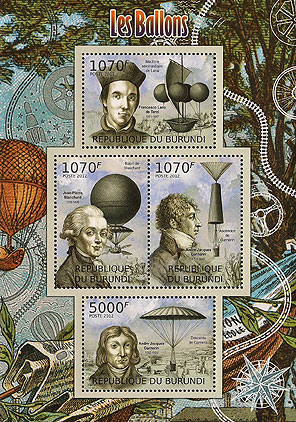
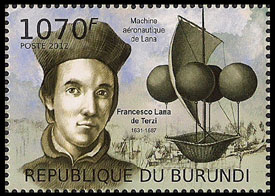
BURUNDI, 2012, the top stamp, from a history of flight, shows Lana-Terzi as well as his flying boat, Scott 1073a
Father
Francesco Lana-Terzi, SJ |


BURUNDI, 2012, the top stamp, from a history of flight, shows Lana-Terzi
as well as his flying boat, Scott 1073a
Born at Brescia in Italy of a noble family, Francesco Lana-Terzi entered the Jesuits in Rome in 1647 and studied at the Roman College. His fame rests mostly on a small volume called Prodromo overo saggio di alcune inventioni (1670) in which he distinguishes between "heavier than air" and "lighter than air" aircraft and describes how the latter might be constructed. The history of human thought about flight usually includes myths like Daedalus and Icarus or the fantastic machines of Leonardo da Vinci, but Lana-Terzi's "flying boat" deserves pride of place because his theories are based on solid science. His ideas became widely known in Europe and underlie fellow Jesuit Bartolomeu Gusmão's first hot air balloon flight in 1709 and the Montgolfier brothers' first manned flight in 1783. Lana-Terzi also anticipated by more than a century possible methods of lip reading and Braille writing and reading for the blind.
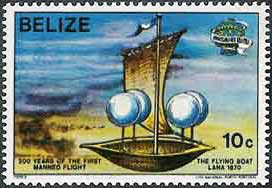
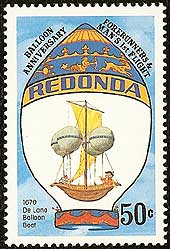

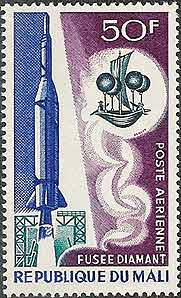
BELIZE, 1983, bicentenary of manned flight, Scott 672
REDONDA, 1983, Redonda is not a country but a rocky island without inhabitants
or post offices, and a territory of Antigua and Barbuda.
From 1979 to 1991 Antigua issued stamps bearing the name "Redonda,"
which were postally valid in Antigua and Barbuda.
ZAIRE, 1978, a tribute to flight, Scott 893
MALI, 1967, a tribute to French achievements in flight, Scott C42
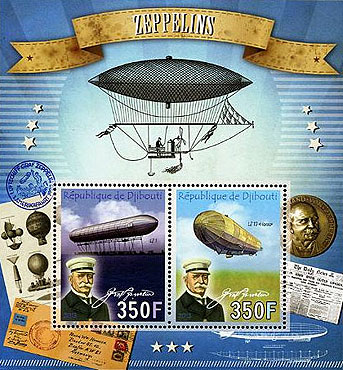
DJIBOUTI, 2013, Lana-Terzi's flying boat appears in the selvage to the
left of the stamps